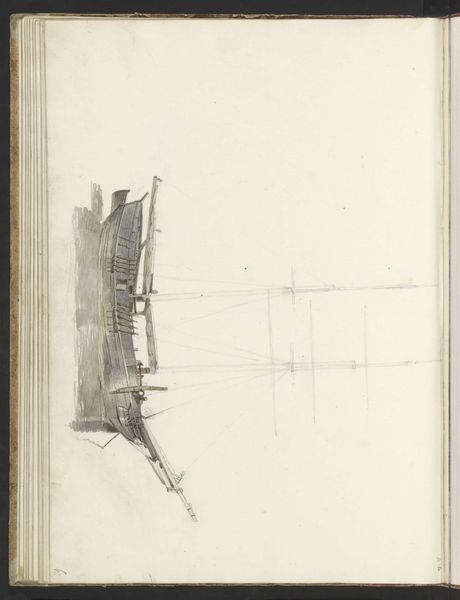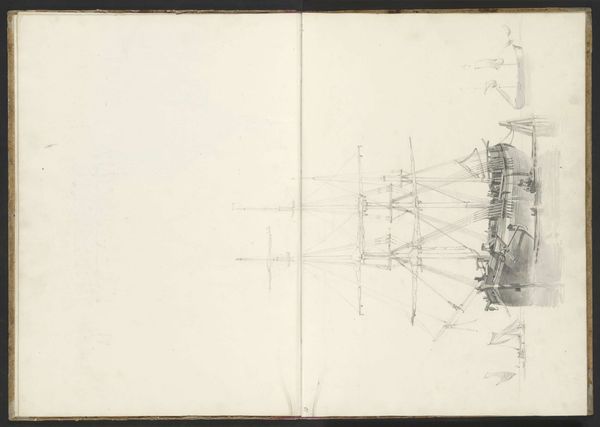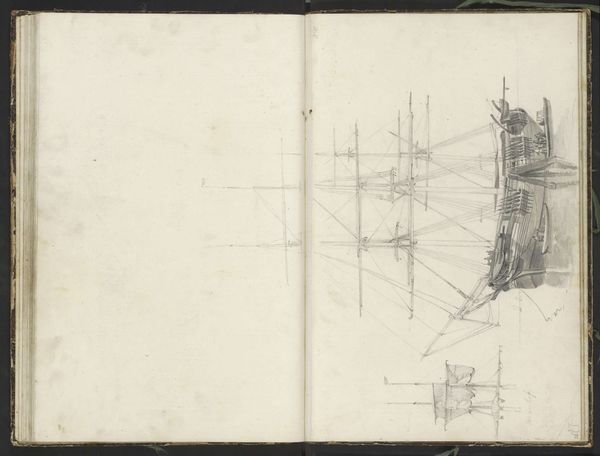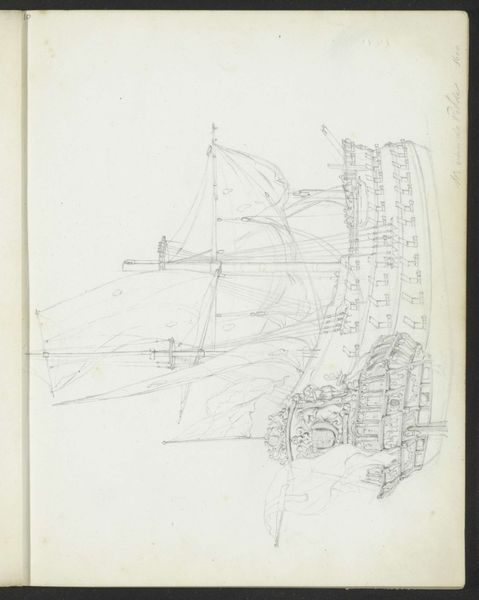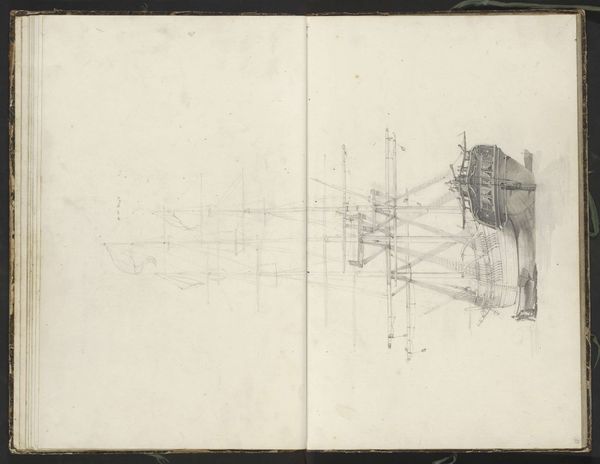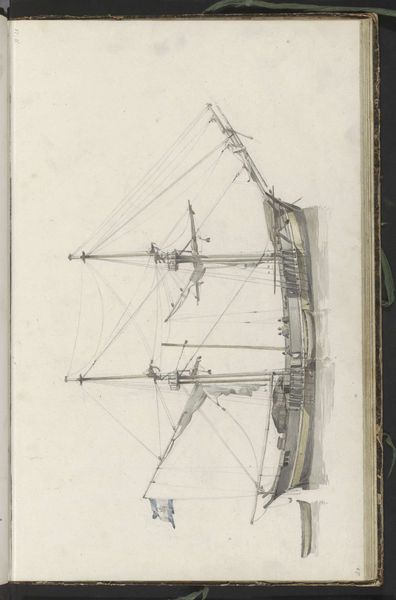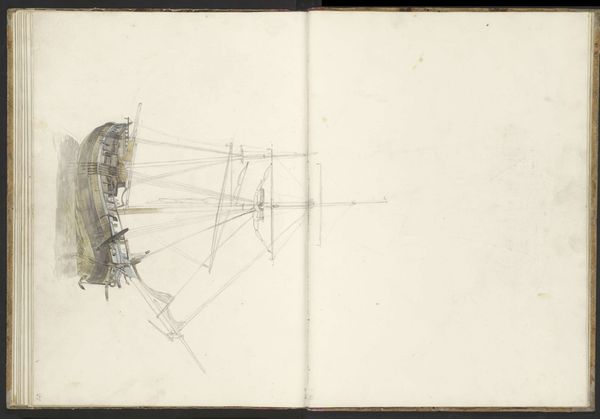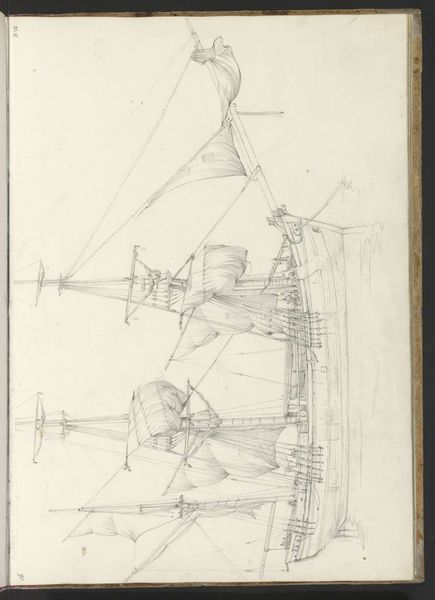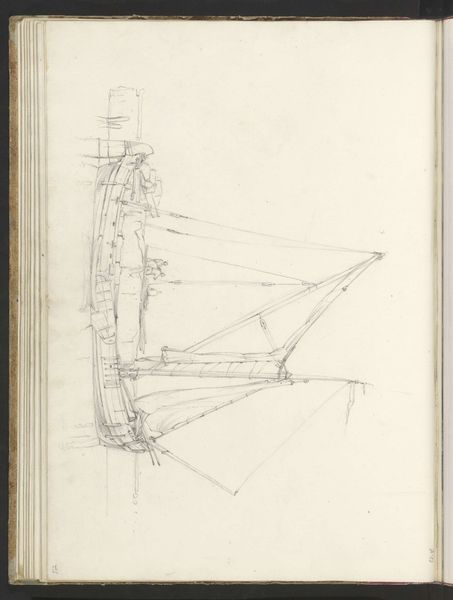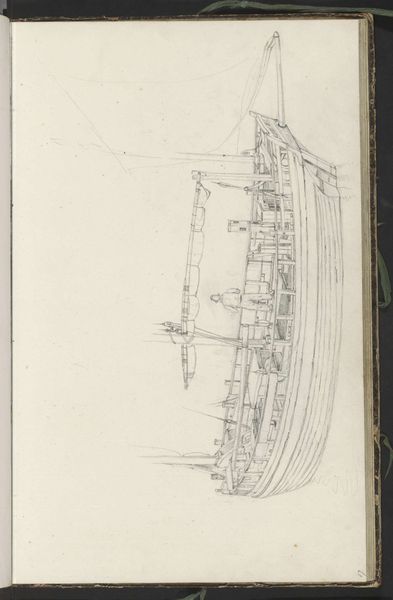
drawing, pencil
#
drawing
#
landscape
#
form
#
romanticism
#
pencil
#
line
Copyright: Rijks Museum: Open Domain
Curator: We're now looking at "Two Men on a Three-Master" a pencil drawing made sometime between 1797 and 1838 by Johannes Christiaan Schotel, here in the Rijksmuseum. Editor: It strikes me as melancholic, almost ghostly. The lines are so delicate, barely there. Is that intentional? Curator: Very likely. Schotel specialized in maritime scenes during a period when the Netherlands was grappling with its identity in the wake of the Napoleonic Wars. His work often reflects a sense of nostalgia for its seafaring past. It’s less about straightforward representation and more about invoking mood and atmosphere. Editor: Nostalgia certainly comes through. The ship itself—stripped down to almost skeletal lines of the masts and rigging—is rendered in meticulous detail, suggesting both technical prowess and symbolic value. What does the "Three-Master" ship represent, beyond maritime transport? Curator: The three-master was the quintessential trading vessel for the Dutch during their Golden Age, so it symbolizes commerce, global reach, and national pride. By Schotel’s time, however, that glory was fading. It perhaps represents a visual symbol of that lost power. Notice the two figures. Editor: They seem rather dwarfed by the immensity of the vessel. Perhaps representing that feeling of loss and powerlessness? Or even isolation, alone on this ghost ship, adrift from their previous reality. The whole composition feels like a lament, really. The ship feels unmoored not just in the visual sense, but also symbolically, untethered to its past. Curator: That is wonderfully insightful! Given its context within the broader Dutch Romantic movement, this image captures the anxieties about progress, and about how societal norms are constructed based on the visual world around us. These images in turn effect how policy can be shaped. It’s fascinating. Editor: For me, its the recurring visual motifs in marine painting that speaks to me - ships that appear on edge of ruin or being tossed by uncontrollable nature forces serve to remind of mankinds limitations, a key to keeping humility present in society. Curator: Absolutely. It reminds us to constantly reflect on who gets to craft and control national imagery and symbols, and for what specific purpose. Editor: I am now looking forward to reflecting more on national images during my lunch! Thank you.
Comments
No comments
Be the first to comment and join the conversation on the ultimate creative platform.

